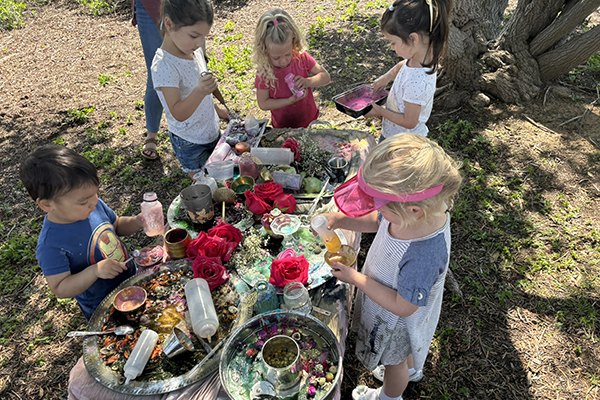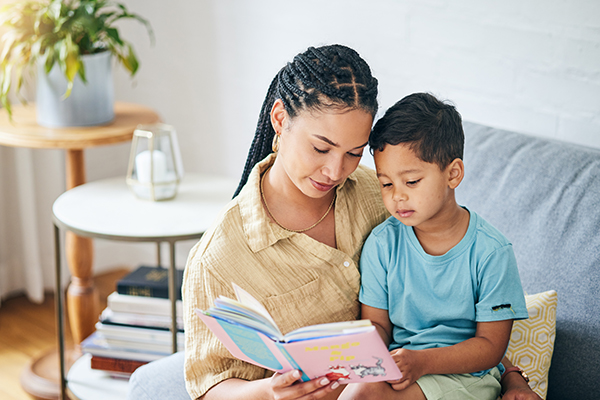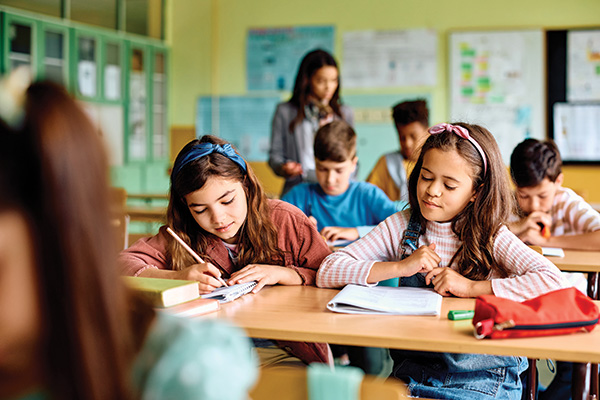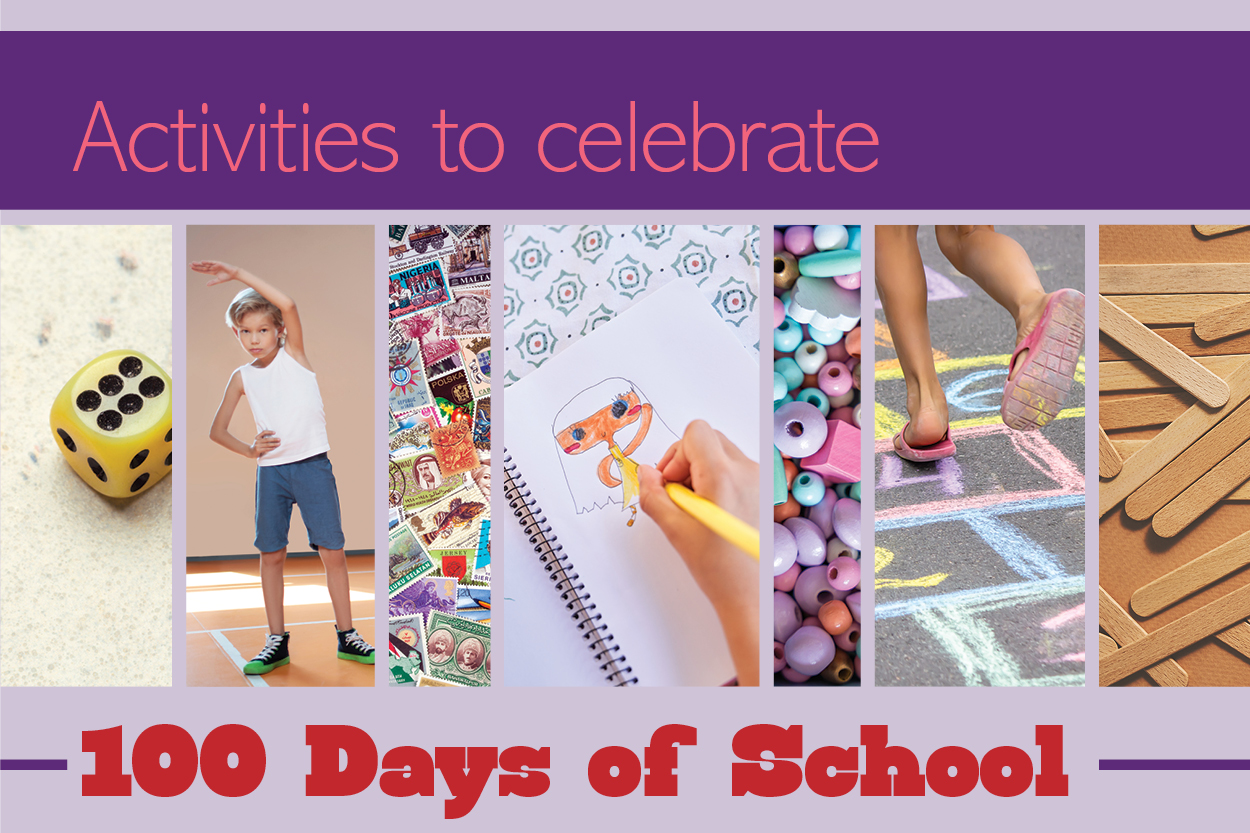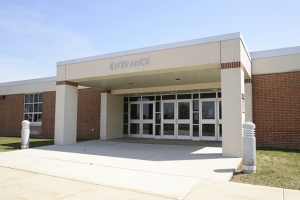As families seek flexible approaches to educating their kids, alternatives to traditional schooling have become more popular. From modern-day homeschooling to worldschooling, these education options offer tailored experiences that prioritize a child’s learning style, pace and special interests. Alternatives to traditional classrooms can also offer individualized attention, emotional support and access to more hands-on learning experiences.
By opting for an alternative learning approach, a family can foster a child’s creativity and curiosity by adapting an education format to better fit their lifestyle and values. Here is a variety of education options for families, some of which fall under the homeschooling umbrella.
CHARTER SCHOOLS
Cost: Free
Charter schools are tuition-free public schools that operate independently from a traditional school district, but are required to follow state laws and academic standards. More flexibility often means more innovative teaching methods. Programs may be in person, virtual or hybrid.
Charter schools offer a level of personalization that benefits all students. Instead of cutting enrichment experiences like art, music, physical education, and project-based learning, charter schools often embrace and prioritize these opportunities, helping students develop holistically—not just academically. ~Stacy Maxon, parent
Clairemont Mesa parent Stacy Maxon chose to enroll her child in a charter school because she wanted an individualized program that fit her son’s unique learning style. “My child’s favorite thing is being involved in the planning of his learning,” says Maxon. “It allows him to feel empowered and excited about his education, and helps me know what he’s interested in.”
According to Maxon, charter school educators focus on the whole child (not just test scores), creating an environment where students can thrive.
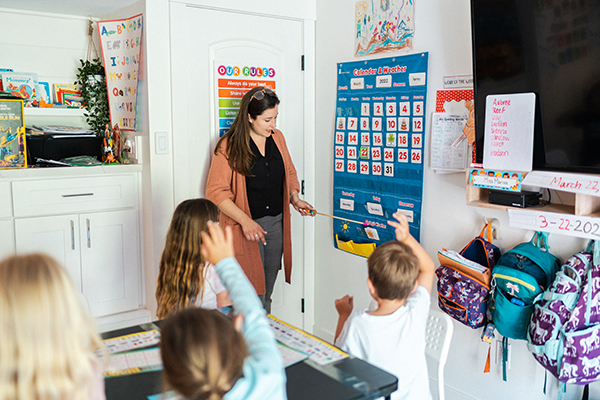
Photo courtesy of Marisa Donnelly
MICROSCHOOLS
Cost: Varies
When the pandemic hit, Marisa Donnelly of Bay Park didn’t want her stepson to miss out on a formal education, so she opened a microschool called Miss Donnelly's Daily Apple, which served teens at the time, but now serves students in grades K–5. Microschools are small learning environments with a student-teacher ratio of no more than 12:1. They typically provide necessary curriculum and offer frequent field trips and activities.
“Microschooling focuses on multisensory and hands-on support for students with learning disabilities, individualization of curriculum…and meaningful relationships,” says Donnelly. “As I align programming with state standards, I have the freedom to explore different ways of teaching (kinesthetic, visual, etc.) that help students engage in their own ways.” To learn more, visit www.donnellydailyapple.com/san-diego-microschool or @donnellydailyapple.
Because my microschool is small, I get to know each of my students and provide instruction that meets them where they are. I can shift learning when something isn't working. ~Marisa Donnelly, educator at Miss Donnelly’s Daily Apple in Bay Park
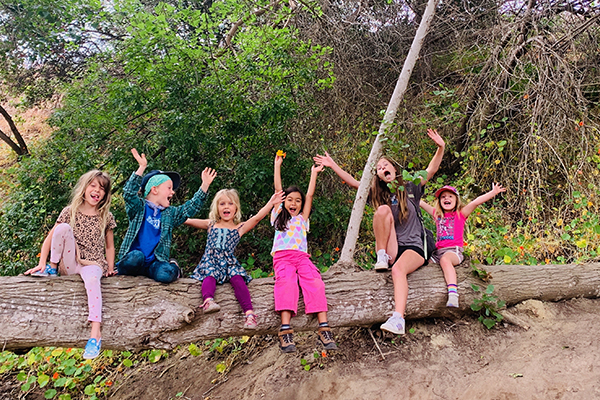
Photo courtesy of Nikki Brill
FOREST SCHOOLS
Cost: Varies
Forest school, which takes place in a natural outdoor environment (usually a forest or wooded area), uses the Reggio Emilio Approach to learning, and includes activities guided by the interests and curiosity of the students, rather than a fixed curriculum. It is a nature-based program, but includes writing, reading and math. Forest schools typically serve pre-K through first grade, but teachers move up with students year after year, so they would be serving older kids within a couple years.
We build shelters, climb trees, identify plants and animals, and forage for natural items to create tasty beverages and snacks. We bring journals and fill them with thoughts, pictures, dictations and anything else that inspires us. ~Nikki Brill, educator at Waves and Woodlands Forest School in Encinitas
Nikki Brill of San Marcos was the lead kindergarten teacher for five years at a popular forest school before co-founding Waves and Woodlands with another credentialed educator. They encourage exploration, creativity and independence, but all of her students were also reading by the end of the school year.
“We do literacy lessons in between explorations, and can pivot when needed,” Brill says. “If students have a lot of energy, we focus on the trails, if students are interested in a particular subject matter, we spend more time exploring that.”
Brill believes forest schools are important for not only physical health, but also building social skills through teamwork and collaboration, assessing and managing risks, and fostering confidence and emotional resilience. Waves and Woodlands (which also has a location in the Vista area) is currently accepting enrollment for ages 3 through first grade. School starts Sept. 2 and runs through June. Learn more on IG @waves_and_woodlands.
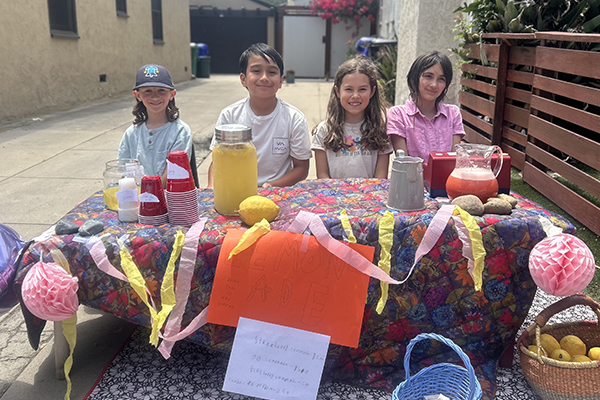
Photo courtesy of Amanda Carrillo.
LEARNING PODS
Cost: Varies (some free)
A learning pod is a small group (3–10 students in the same grade) that meets consistently to supplement an online or homeschool program, offer tutoring, or even replace traditional schooling if state standards are met. They vary in structure and can be taught by a parent, tutor or teacher, but offer a flexible and personalized learning experience.
One of the benefits of pod learning is the tight knit community the children are part of. They don't follow a strict curriculum with dozens of students in one classroom. They engage in personalized learning…express their opinions and personalities within their small peer group. ~Amanda Carrillo, parent and educator
Amanda Carrillo of North Park is the founder of The Mindful Ones homeschool pod. They meet two days a week, for five hours a day. There is time for student-led play as well as structured, engaging lessons in language arts, mathematics, science, geography, art, nature, cooking and yoga. While the students meet in a home setting, they are also taken to local parks, museums, beaches, grocery stores and other places where learning can occur. “In a way, the whole of San Diego is used as our classroom,” she says.
Want to start a learning pod? Read our article “Learning Pods 101” for great tips and information: www.sandiegofamily.com/resources/education-directory/learning-pod-tips.
Photo courtesy of Jim Kelly.
HOMESCHOOL COOPERATIVES (CO-OPS)
Cost: Free
A homeschool cooperative is a group of homeschooling families who work together to support and provide enrichment to their children. There are many ways a cooperative can work, but often parents share responsibilities of teaching or leading activities for the entire group.
Nature Nurture Playhouse, similar to other co-ops in San Diego County, consists of homeschool students of varying ages and parents/guardians participating in activities one to five days a week. Consistency in a co-op is important to learning, as fostering healthy relationships and friendships is key to success.
There is a certain magic that happens when children are ready to learn. The older ones learn how to lead and assist the younger ones…parents help with questions and often provide their own experiences, which adds to the diverse understanding of the topic. ~Jill Kelley, parent
Jill Kelley of Coronado appreciates the collaboration and community a co-op provides, as they can meet in parks, museums, gardens—anywhere a group can gather and learn. “Co-ops are flexible in the way we approach learning,” she says. “This is the beauty of a co-op; it is fluid and we can pivot [as needed].”
PRIVATE SCHOOLS
Cost: Varies
According to the San Diego Consortium of Independent and Private Schools, accredited private schools offer an academically rich learning environment that encourages innovation. Unlike public schools, they are governed by their own board of trustees and are self-funded by tuition, philanthropic contributions and endowment funding.
Some private schools offer religious education, arts-focused programs, rigorous academics or unique teaching philosophies. Depending on enrollment and class sizes, students may have more freedom for creativity and personalized learning.
When my child attended private school, I appreciated the focus on kids having breaks to move around and play. It's really important in helping develop a love of learning. I also liked the small class sizes, two full-time teachers in each classroom, and that the class had students ages 5–7. ~Amanda D., parent in Downtown San Diego
WORLDSCHOOLING
Cost: Travel expenses
Worldschooling is an educational approach that utilizes real-world experiences as tools for learning. Students learn about a variety of environments and cultures through travel, speaking with people from different countries and learning new languages. It’s using the world as the classroom. Children learn science, social studies, foreign languages, math, reading and arts while exploring with their families.
Learning…doesn’t follow a one-size-fits-all model. Whether we're exploring the volcanoes of Hawaii, visiting a dairy farm in the Central Valley, learning from a family in a different part of the world or hiking nature trails in San Diego, the experiences are vivid and meaningful. ~Neha Chhabra, parent
When exploring educational options for her son, Neha Chhabra of San Diego’s East County knew that a traditional classroom setting would not be the best fit. She began worldschooling to provide him with personal, hands-on, context-rich learning.
“Some families travel full-time, while others root themselves in one place and explore the world through community, nature or even virtual connections,” says Chhabra. “For us, it’s about raising curious, adaptive world citizens who see learning as something that happens everywhere—not just within four walls.”
Chhabra also runs a gameschool group, which is the practice of using games—board games, card games, dice games, role-playing-games, and even active outdoor games—as tools for learning. “Instead of worksheets or lectures, children learn concepts like math, reading, science and history by immersing themselves in games that naturally teach these skills,” she says. Find her on IG @diceanddiscover.
To explore educational alternatives in San Diego, access our Fall Education Guide for local private schools, tuition-free charter schools, Montessori schools and more: www.sandiegofamily.com/resources/education-directory/education-directory. For additional information, search local Facebook groups in the topic you’re interested. Once you’ve joined a group, seasoned parents can offer insightful information.
Amanda Cavallari is a lifestyle writer residing in San Diego.
